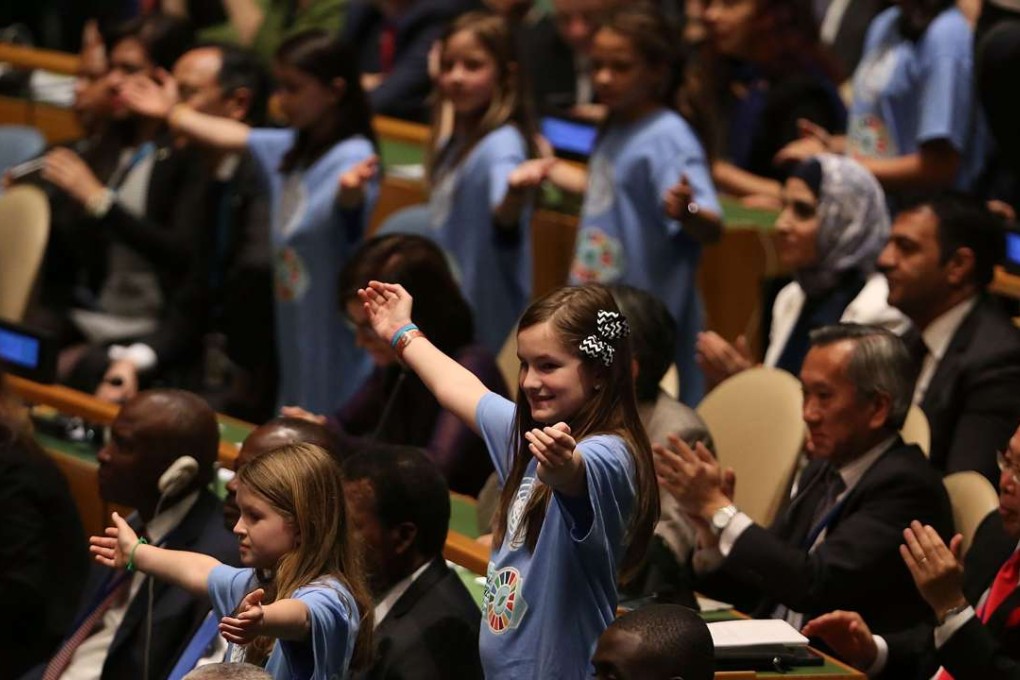For the Paris climate deal to succeed, the money must flow
Agustín Carstens and Patricia Espinosais say the agreement is a triumph for multilateralism but it needs to be backed by both financial systems and private capital

At the recent UN General Assembly session in New York, Secretary General Ban Ki-moon predicted that the Paris climate agreement would enter into force before 2017, announcing 60 countries had now ratified its terms. Next week, the International Monetary Fund and World Bank welcome an influx of finance ministers and central bankers to its annual meetings in Washington.
Historic Paris climate deal signed by 175 nations
At first glance, these two events might appear totally unrelated. The imminent ratification of the Paris Agreement – a deal to keep global temperature rise below 2 degrees Celsius – is a huge achievement and a real triumph for multilateralism. It also focuses the mind on the next step: how will the agreement be implemented across the world?
The cost of making the transition to a low-carbon future is measured in trillions
Here, we get our first inkling as to why the finance ministers, central bankers and regulators – packing their suitcases for Washington – are so relevant to our story. Right now, progress is being made towards mobilising US$100 billion in annual financing flows from rich countries to developing economies by 2020. Practical implementation is also taking place on the ground. Funding from the Green Climate Fund is helping to build resilience into coastal and urban infrastructure projects in Bangladesh, while in Tanzania over 100,000 homes now have electricity through Off-Grid Electric, a clean energy company backed by debt financing from the Million Solar Homes Fund.
With historic climate accord, world marks turn from fossil fuels
Yet, overall, the cost of making the transition to a low-carbon future is measured in trillions. This quickly takes us far beyond the realm of public funds since no government – no matter how rich – can finance climate action through taxation and borrowing alone. One estimate suggests that around US$90 trillion will need to be invested by 2030 in infrastructure, agriculture and energy systems, to accomplish the Paris Agreement.

Paris climate goals will cost Asia US$300B a year, but rewards are huge, says ADB
This won’t happen without private capital and underlines why aligning the world’s financial system with the needs of climate action and sustainable development is every bit as important as emission reduction pathways and removing fossil fuel subsidies. Moreover, set against the US$300 trillion of assets – held by banks, the capital markets and institutional investors – we’re faced with a problem of allocation rather than outright scarcity.
In fact, finance ministers and central bank governors are already deeply engaged. Those from G20 nations recently agreed a set of options to improve the ability of the global financial system to deliver green investment. One promising area is the rise of the green bond market, where companies and municipalities can raise capital that is ring-fenced for priorities such as renewable energy, building efficiency and water management. So far this year, the combined value of green bonds has grown to more than US$45 billion, a fourfold increase from 2013. By way of example, Mexico’s development bank, Nacional Financiera S.N.C, issued its first US$500 million green bond last November to finance wind energy in the states of Oaxaca, Nuevo Leon and Baja California.

Others must now follow China-US climate action, or be left in the dust
However, the world’s capital markets still do not fully incorporate climate factors when pricing assets and evaluating risk. In response, the Financial Stability Board set up a task force on climate disclosure headed by former New York mayor Michael Bloomberg. Only with better and consistent reporting will banks, pension funds – and individual investors – be able to understand how the transition to a low-carbon economy will affect investments.